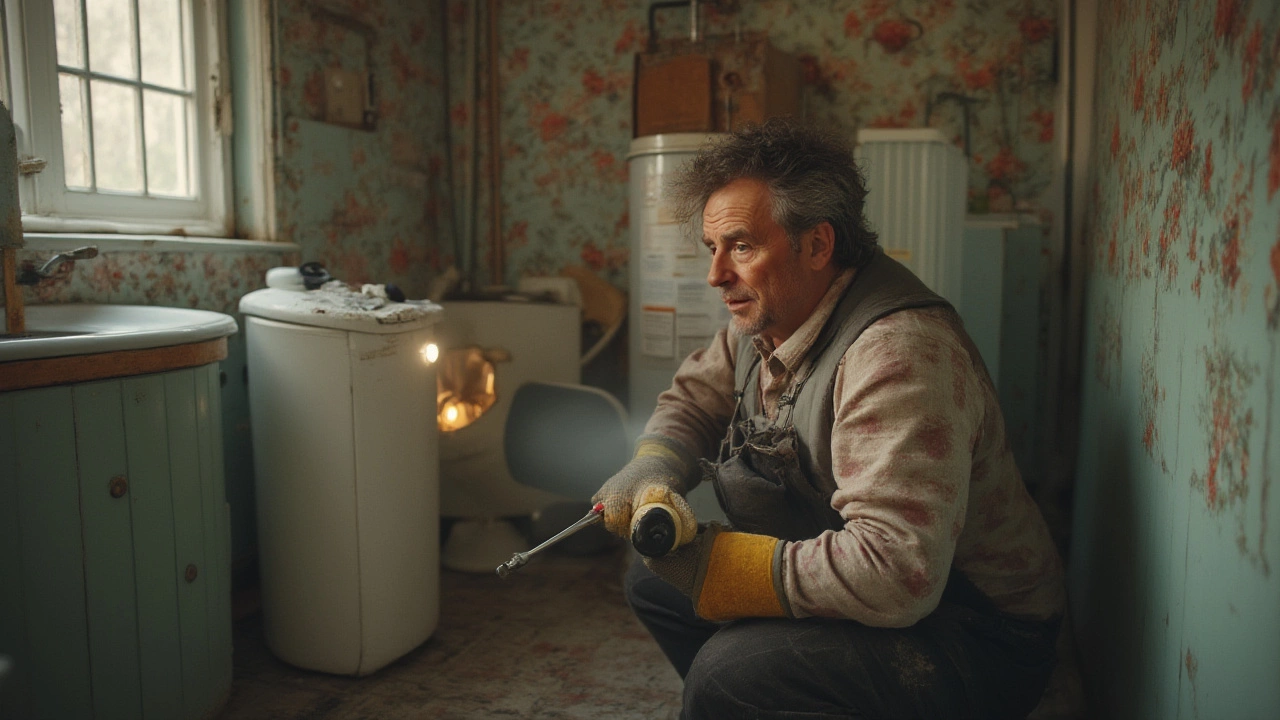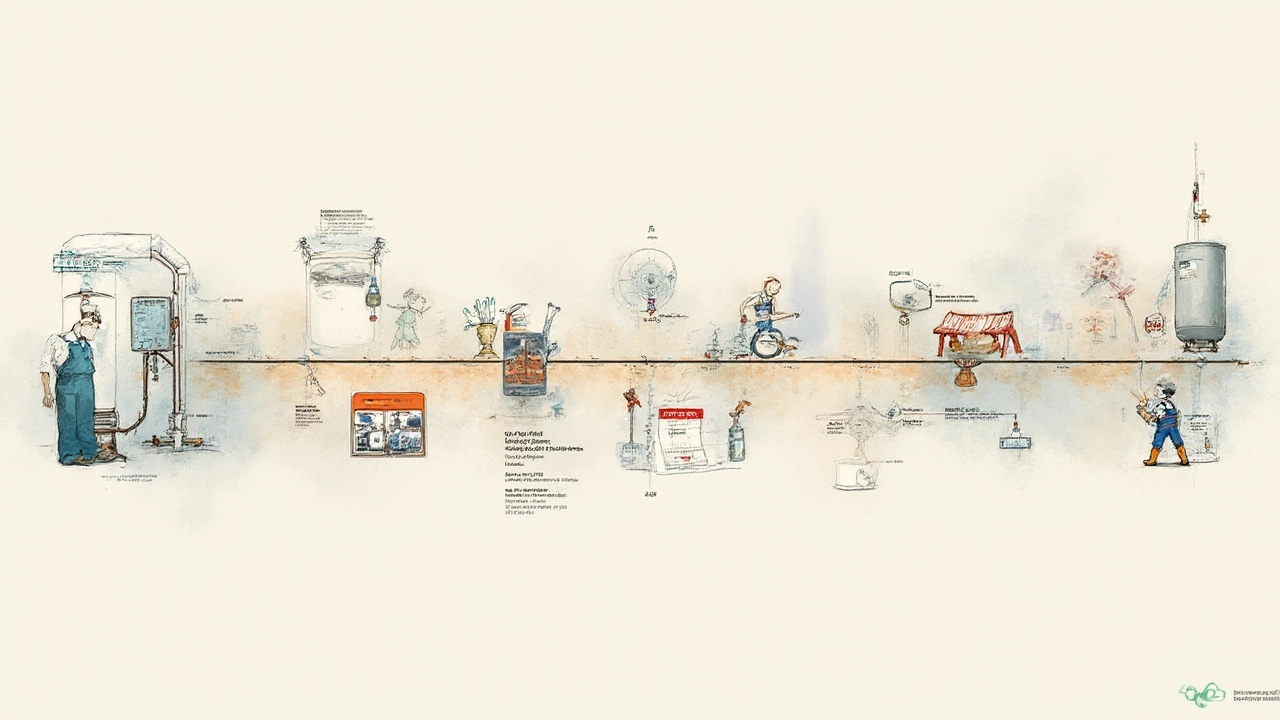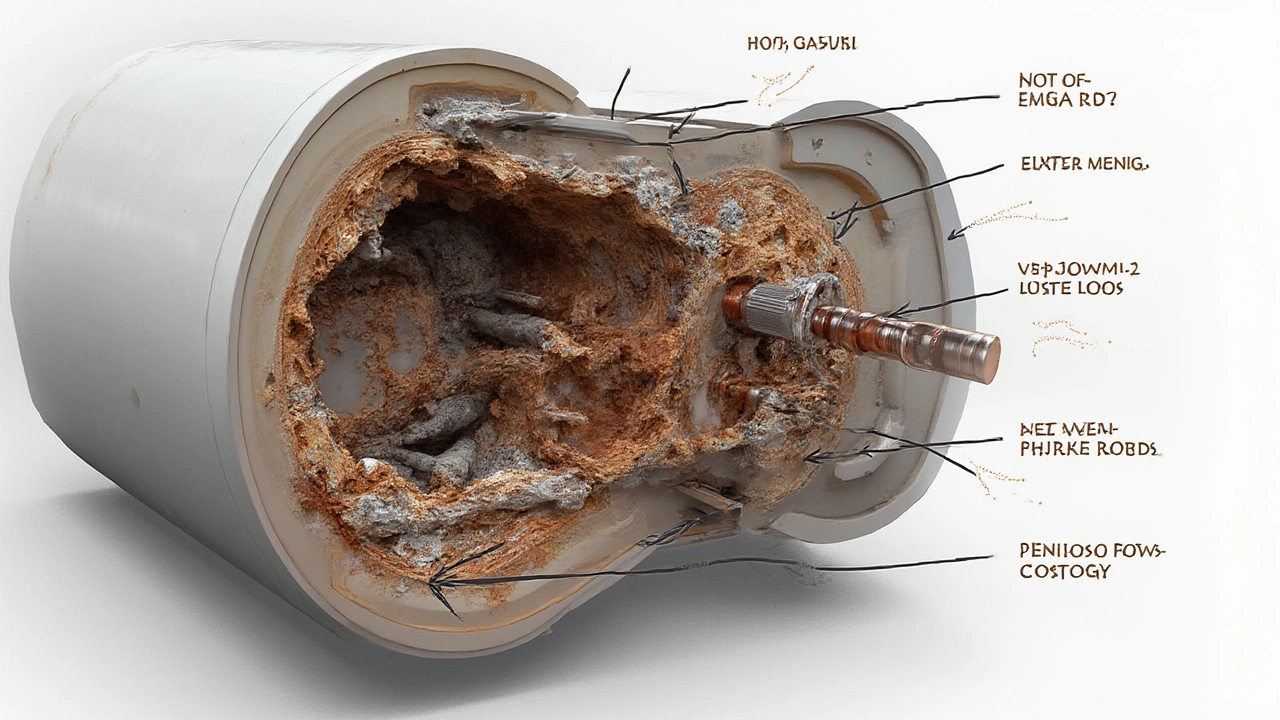You wake up, step into the shower, and get hit with a blast of cold water—not the best way to start your day. The villain? Usually, the water heater, sitting in the shadows, quietly failing. It’s easy to forget this appliance exists until something goes wrong. It never feels urgent until you need hot water and get the opposite. But if you've lived in a house for more than a year or two, you probably know the pain of a water heater breakdown. So, what usually breaks inside these humble tanks, and is there anything you can do to keep the hot water flowing?
Inside the Tank: The Parts Most Likely to Fail
Let’s peel back the metal shell and take a look at what’s inside your water heater and figure out which parts have a bad habit of dying first. Inside a typical tank water heater, whether gas or electric, you’re looking at a few critical pieces: the heating element (or burners for gas models), the thermostat, the anode rod, the dip tube, and a bunch of valves that keep water from flowing the wrong way. The water heater tank itself also can develop issues—ever heard of leaks around the base?
- Anode Rod: This is a biggie. Anode rods sit inside the tank and are made of magnesium or aluminum. Their main job is to draw all the corrosion to themselves—sort of like a sacrificial bodyguard for your tank. If the anode rod is spent, rust starts winning and the tank’s days are numbered. Most people never even know this rod is there, let alone replace it. That's a missed opportunity because swapping it is straightforward and can double the life of your tank.
- Heating Elements/Burners: Electric heaters use heating elements that look like giant screws, while gas heaters use burners. If you find yourself with a tank full of ice-cold water but everything else seems fine, check here. Heating elements can burn out, and burners can get clogged with gunk, both leading to chilly morning showers.
- Thermostat: Think of this as the “brain” controlling how warm your water gets. A wonky thermostat can mean water that’s too hot, too cold, or never at the temperature you want. Diagnosing a bad thermostat isn’t rocket science, but most people misdiagnose it or don’t realize it’s even there.
- Temperature and Pressure Relief Valve (T&P Valve): This is the safety valve keeping your tank from exploding under pressure. If it’s leaking, sticking, or stuck shut, you’re looking at a dangerous situation. Replacing a T&P valve should be a top priority if you notice any leaks or see water trickling down the side of your tank.
- Dip Tube: This little guy keeps cold water directed to the bottom of the tank so the hot stuff rises to the top. If it breaks or falls apart (which happens more often than you’d think), you’ll end up with lukewarm water even when everything else works.
Here's a quick cheat sheet to what's inside, and what’s most likely to break first:
| Component | Average Lifespan | Common Issues |
|---|---|---|
| Anode Rod | 3-5 years | Corrosion, rust in water |
| Heating Element/Burner | 4-8 years | No hot water, tripped breaker |
| Thermostat | 5-7 years | Wrong water temp |
| T&P Valve | 5-8 years | Leaking, stuck, safety risk |
| Dip Tube | 6-8 years | Lukewarm water, uneven heating |
| Tank | 8-12 years | Leaks, flooding, rust |
Spotting Trouble: Signs of a Broken Water Heater
It’s easy to ignore your water heater until the signs become obvious, but a little attention to detail can save you big money and even bigger headaches. The first sign people notice is usually cold water, but here’s where it gets sneaky—a failing part might not kill the hot water right away. Sometimes, it creeps up on you. Watch for these signals:
- Weird Noises: Popping, banging, or gurgling from the tank usually means sediment is building up around the heating element or burners. This buildup acts as an insulator and makes the heater work harder, so your power bill climbs while water gets colder.
- Rusty or Discolored Water: Water that looks like weak coffee or smells odd is often a red flag for rust inside the tank. This usually points to a finished anode rod or a tank that’s developed internal corrosion. Catch this early and you might just need an anode replacement, not a whole new heater.
- Leaks and Moisture: If you spot water pooling under the tank or see dampness around valves, act fast. Sometimes, it’s just a loose fitting, but tank leaks mean your unit is done. Most tanks are built to rust from the inside out, so once you see water on the floor, it’s time to shop for a new heater.
- Unreliable Hot Water: If your water temperature swings wildly from hot to cold or never reaches the level you want, the thermostat or dip tube could be toast. Electric models with faulty heating elements behave exactly the same.
- Sulfur Smell ("Rotten Eggs"): If your water has a sharp, sulfur-like stink, especially from the hot tap, bacteria in the tank are reacting with the anode rod. Swapping in an aluminum-zinc rod usually clears this up.
The trick is to deal with issues early. Waiting for total failure usually means expensive repairs or replacements. A little attention to early warning signs can extend your water heater’s life by years.

Why Do Water Heater Parts Keep Breaking?
The average water heater isn’t built to last forever—the typical tank model gives you 8 to 12 years before giving up the ghost. But certain conditions will chew through those years even faster. The biggest culprit? Hard water. If your home’s water is packed with minerals (like calcium and magnesium), expect a buildup of sediment inside the tank. This sediment falls to the bottom and covers the heating element or burner, cutting efficiency and leading to cracks and leaks. In fact, the U.S. Geological Survey puts about 85% of the country in the “hard water” zone, and these homes replace anode rods and tanks way faster than average.
Ignoring basic maintenance is another big killer. Most homeowners don’t drain their tanks or check valves until something blows up—literally in some cases. Sediment removal is a chore (and nobody loves chores), but flushing the tank at least once a year can keep things running smoother, longer. In hard water areas, you might want to flush the tank twice a year.
If the water pressure going into your heater is too high, it stresses the T&P valve, gaskets, and even the tank seams. Anything higher than 80 PSI is asking for leaks, valve failures, and ruined tanks. A simple pressure gauge at the hose bib or heater inlet tells you what you need to know. Installing a pressure reducing valve is a quick fix if your readings are high.
Finally, anode rods just don’t get the love they deserve. If your water heater is more than three years old, odds are good the rod is already half spent. Many tanks die young simply because nobody bothered to replace this part.
Extending Water Heater Life: Tips That Actually Work
So, what can you do to keep your water heater from breaking? Let’s get specific. You don’t have to be a plumbing pro, but a little know-how pays off every time.
- Inspect the Anode Rod Every 2-3 Years: Pull it out and check the metal. If it’s less than half the original diameter or coated in calcium crust, swap it for a new one. If your water smells odd, try an aluminum-zinc rod instead of plain magnesium.
- Flush the Tank Annually: This clears out sediment and grit. Just hook up a hose to the drain valve and let the tank empty outside. Watch for cloudy water or sand coming out—sure signs that sediment was working overtime inside your heater.
- Test the T&P Valve: Lift the lever and see if water spurts out the discharge tube. If nothing happens or it keeps dripping afterward, replace it immediately. Don’t risk a pressure explosion over a $15 part.
- Check Water Pressure: Screw on a pressure gauge at a hose bib or on the heater’s inlet. If it’s over 80 PSI, call a plumber or install a pressure reducing valve yourself. High pressure will ruin any tank, fast.
- Schedule Annual Maintenance: If you’re not handy, call a plumber every couple of years to check the tank, valves, anode, and sediment situation. It’s cheaper and less stressful than an emergency replacement.
Surprisingly, just these basic checks and chores easily double the life of most water heaters. People think “set it and forget it” is good enough, but even low-tech tanks need some love.

When to Repair, When to Replace: Reading the Signs
Not all water heater issues are worth fixing. Sometimes you’re better off recycling the old tank and starting fresh. Here’s how to read the signs:
- If the tank itself is leaking, it’s game over. Patching won’t work—replace it immediately.
- If you’re dealing with a dead heating element, thermostat, anode, dip tube, or T&P valve and the tank is under ten years old, go ahead and fix it. These replacements are easy and cheap compared to buying new.
- Multiple failures or repeated repairs (like constantly replacing valves or heating elements) usually point to an aging tank or poor water quality that’s damaging everything inside. In this case, a replacement is the smart move.
Modern water heaters come with more insulation and efficiency than old school models. If you’re seeing high energy bills or you’ve poured money into your current tank, consider a replacement. A new water heater isn’t just about hot showers—it’s about cutting monthly costs too.
If you prefer to upgrade rather than just replace, tankless systems (also called on-demand water heaters) are a good bet for some homeowners. They don’t store water, so there’s less risk of leaks and corrosion. They also last longer on average—fifteen to twenty years. But remember, tankless models like clean, sediment-free water. If your water is mineral-heavy, install a whole-home filter. Otherwise, you’re right back with clogs and cold showers.
Hot water is one of those modern comforts you don’t appreciate until it’s gone. With a bit of regular maintenance and attention to the parts that most often break, you can dodge disaster and enjoy smoother mornings—no icy wake-up calls needed. It’s not sexy work, but for anyone who relies on their shower or dishwasher, it’s worth it.

